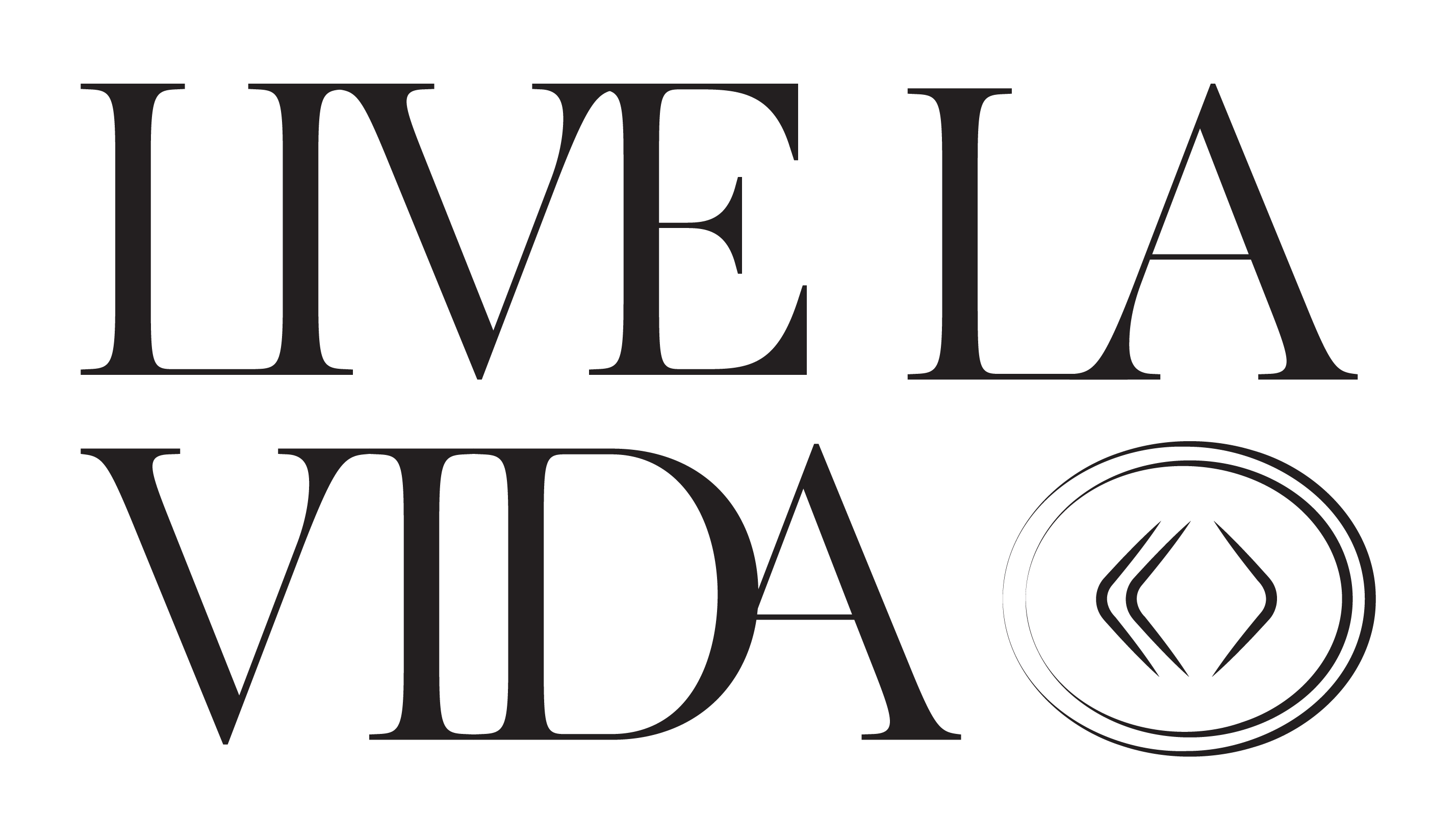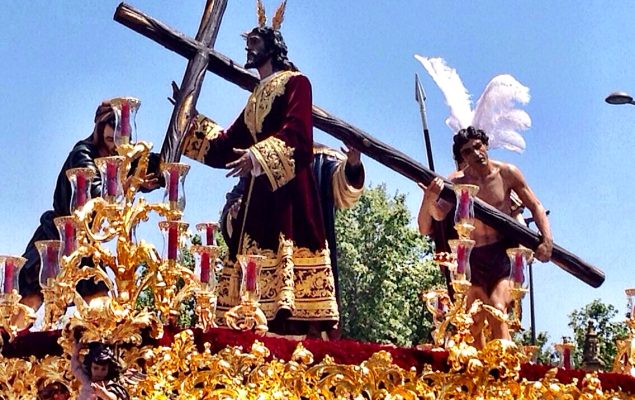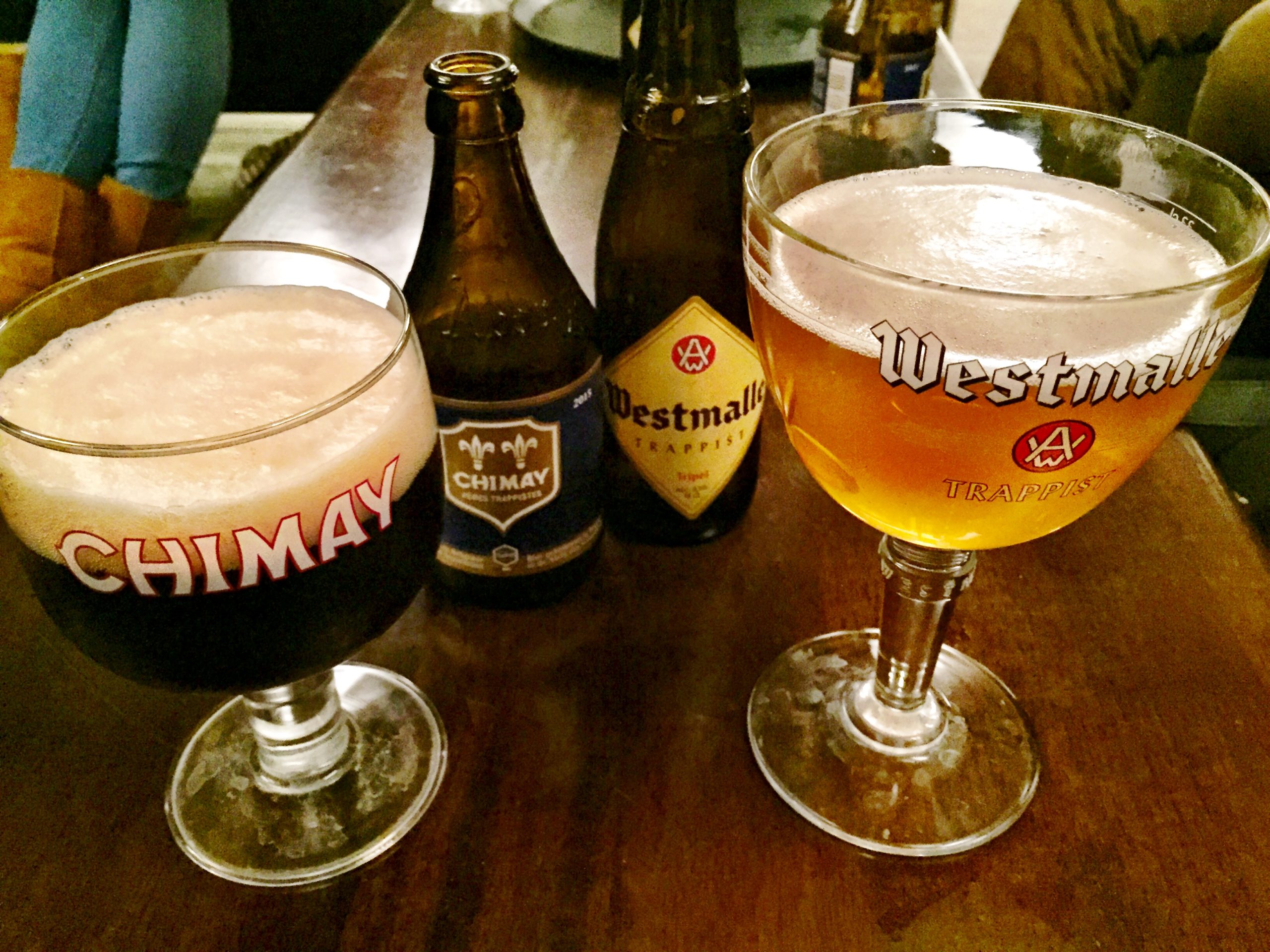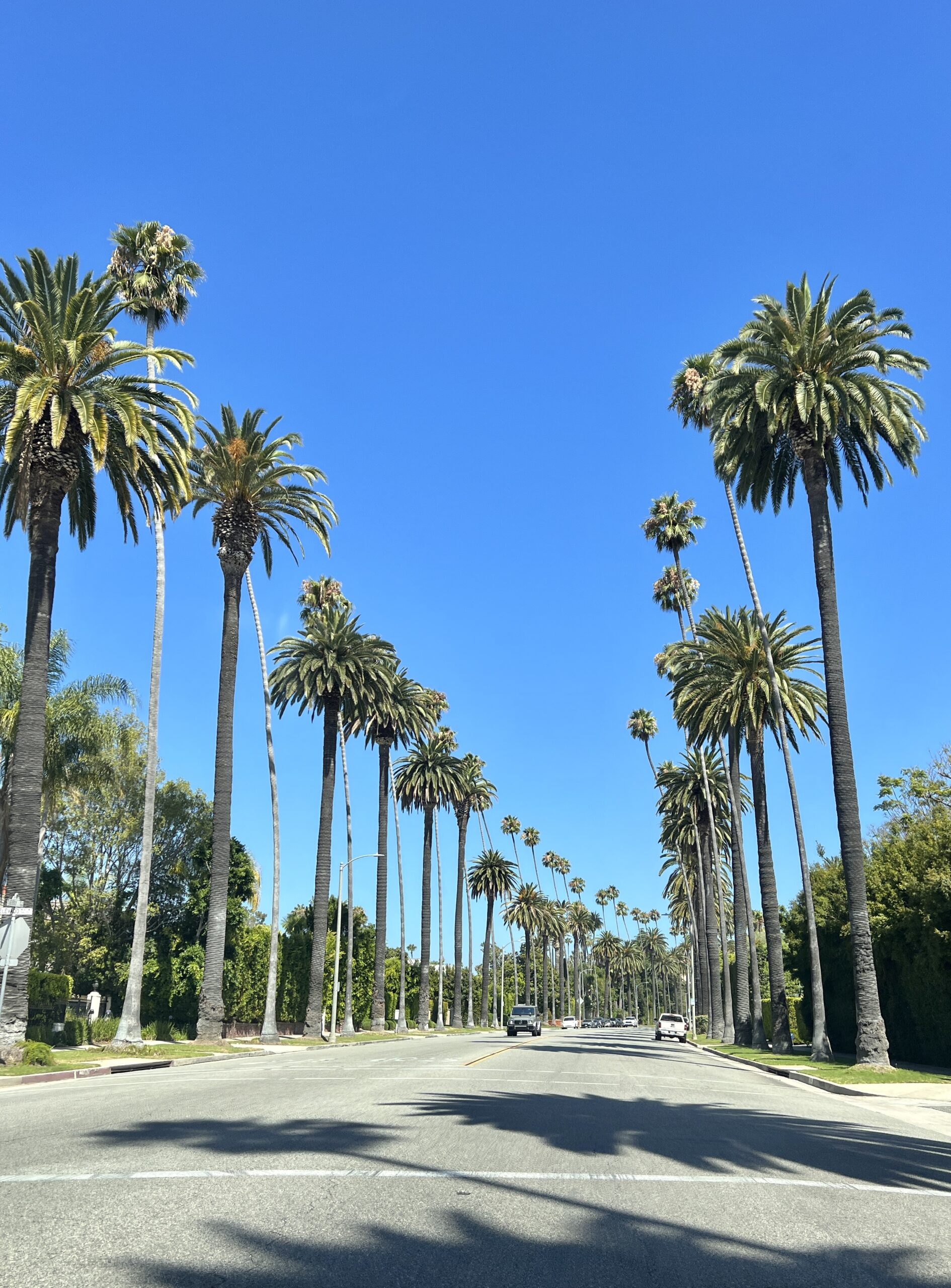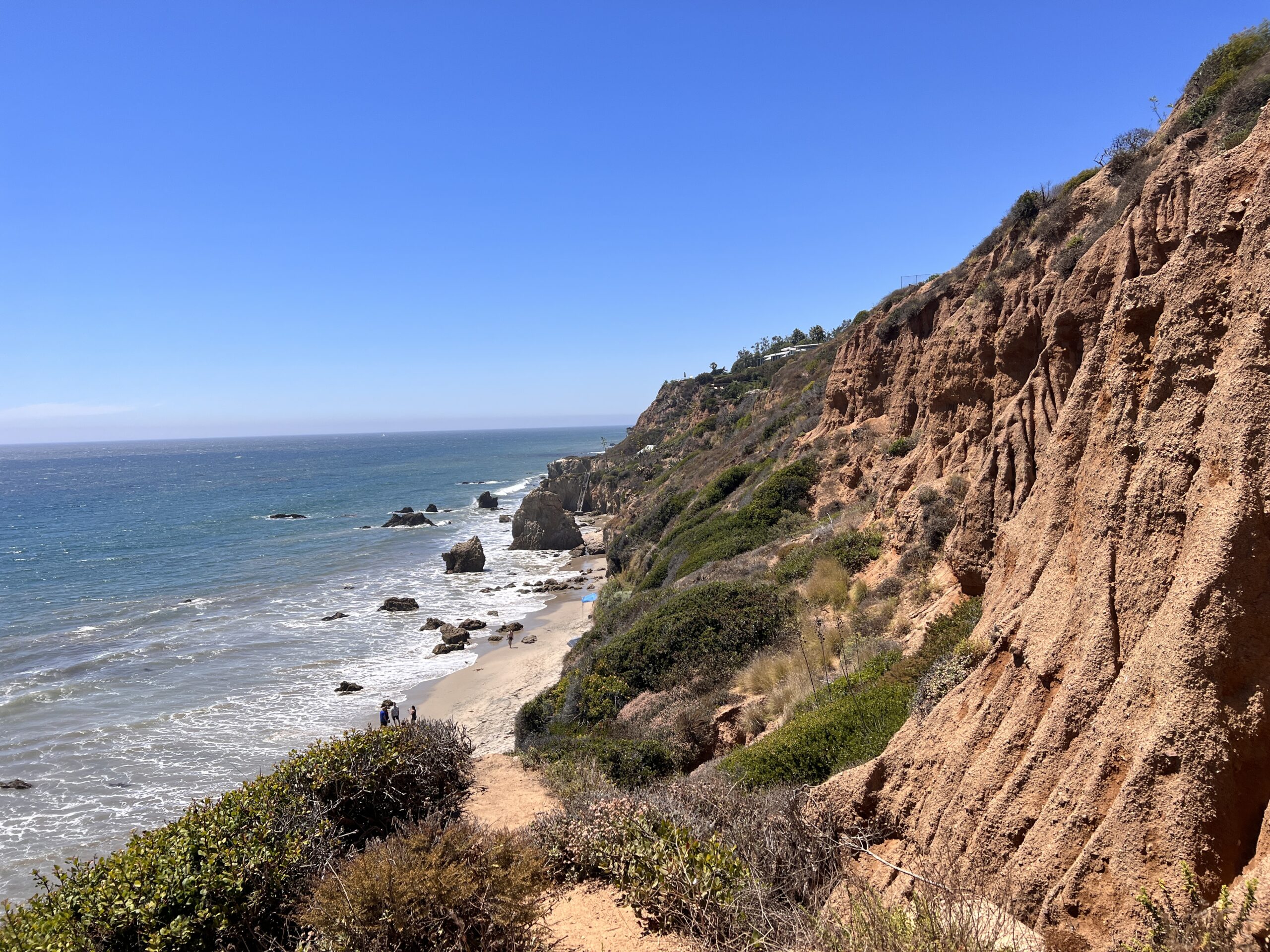Hello everyone! Now that the orange trees are in bloom, the sun is staying out later and tourists are wearing shorts, we can tell that Spring is here in Sevilla! A huge part of Spring in Spain is Semana Santa (or Holy Week). Semana Santa begins on Palm Sunday (Domingo de los Ramos) and ends on Easter Sunday. This also happens to be school holidays as well. (Spring break always falls on Semana Santa in Spain).

As you probably know by now, Sevilla is a very old city, filled with many traditions! Spring is huge for Sevillianos because it means 3 very important things: Bull fighting season begins, Semana Santa (or Holy Week) and Feria! This year, Mark and I will not be in Sevilla for Holy Week (since we are traveling to Amsterdam & Paris with our Moms) but I thought it’s important to share information about this unique and old tradition!

It is very difficult for someone to understand the true madness of Semana Santa unless they experience it for themselves. In the Spring of 2014, I was living in Sevilla for study abroad and witnessed Semana Santa first hand. (The pictures are from my experience during Semana Santa 3 years ago). What exactly makes Holy Week so big in Sevilla? The Processions. (Semana Santa processions are over 600 years old!!)

You might be wondering what I mean. In order to understand Semana Santa, you’ll have to learn a few new words! Different people in Sevilla are associated with different Hermandades (or brotherhoods) that represent each church in the city. The people process through the streets (sort of like a parade) in their Brotherhood’s color garb, holding crosses and candles. Usually a marching band will lead the procession. At the very end, there is a Paso. (There isn’t a good enough word in English to describe these things). They are very old…and priceless!

These Pasos are carried by 30-50 men, who are all in formation underneath it. They are hidden by a curtain around the bottom of the Paso, so only their feet are visible. This gives the illusion that the Paso is floating down the street, to the beat of the marching bands drums. These Pasos can weigh more than 11,000 pounds!! The men underneath, called costaleros, carry it on their necks/shoulders. They rotate who is underneath every 10 minutes or so. They carry the Pasos from their church to the Cathedral in the center of Sevilla. Some of these journey’s take over 10 hours.
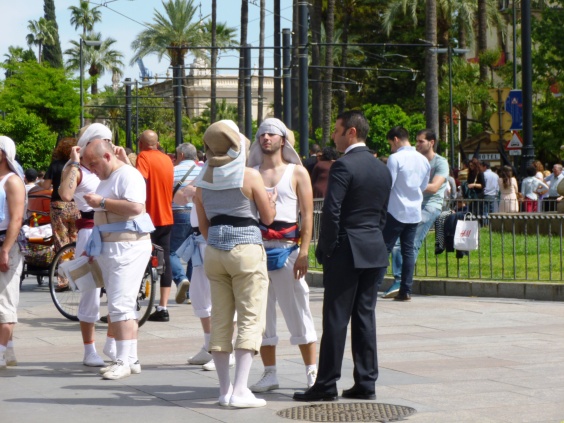
In front of the Pasos are the Nazarenos. They are usually dressed in colorful robes (according to their brotherhood) and wear a pointed cap that covers their face. Some members of the brotherhood walk barefoot, to honor Christ. The ones that carry the cross do not wear a pointed cap like the others.

The pointed hats are called Capirotes. Although this ensemble could seem eerie to an American, it is very traditional for Spaniards. During the day, some children will process with their mothers/fathers and wear miniature outfits of these.

Like I said before, the brotherhoods come in many different colors, including all white. Although in the United States we associate this look with the Klu Klux Klan, the Nazarenos were around much longer than the KKK. Although I must admit, it was very strange for me when I first saw the all white ones.

Semana Santa is one of those times I find myself fascinated by the power of tradition here in Spain. Although the week is very tiring, it’s an interesting cultural experience to witness.
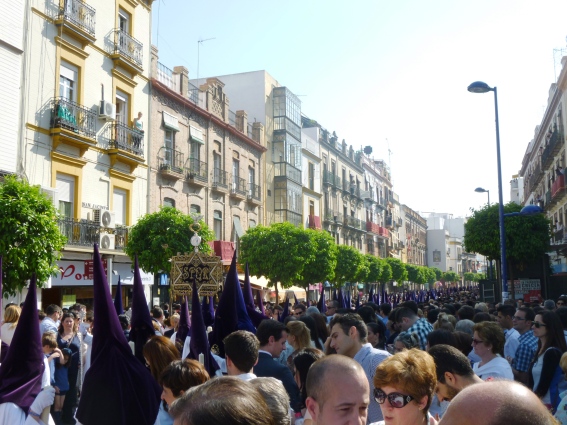
This week is very important in Sevilla, so be warned that some busses might not run their normal routes and main roads will be shut down in order to allow the processions to pass. The city is also very crowded and congested during this time of year, so be weary.

Like I said before, we will not be in Spain for Semana Santa this year because we are meeting our mothers for a trip to Amsterdam & Paris! We are excited to spend some time with them and show them two of our favorite cities!
Stay tuned for posts about our adventures there!
Adios! Amanda
